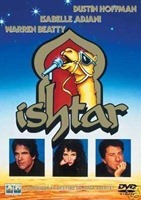I don’t know of any author who hasn’t been flummoxed (word of the day courtesy of James Scott Bell) by the task of writing a first synopsis. Do they get any easier to write? Not for me. Each story idea presents a unique essence that must be distilled into a short brief. Some authors sell books on proposal (with or without a writing sample), or they use the synopsis to be an initial outline of the story idea (a guide post), or an effective synopsis brief can be a part of a solid query letter or made into a quick pitch to an editor or agent. However you use a synopsis, I thought I’d share what has worked for me.
Key Elements to Writing an Effective Synopsis
1.) The Basics – Generally a synopsis is 5-7 pages long, double spaced with one-inch margins. Be sure to include your contact information on the first page and I would recommend adding a header on every page (in case an editor or agent drops your proposal and the pages get out of order). My headers have my name, title of the book, genre, word count, and page number (on far right). I often have a tag line that I list at the top, before the synopsis brief. If you are represented by an agent, I would list that near your contact information. A professional presentation will make you stand out in a slush pile.
2.) Writing a synopsis shouldn’t be about defining the rules of the game. It should be about why you’d want to PLAY it. Give the editor or agent or reader a sense of your voice and the color of the world you will build. Think of a synopsis as a lure, an enticement for them to want more. Rules are boring. Tell me why the game will be really good, or fun or scary.
3.) Whether there is quirky humor or a dark suspenseful undertone to your book, the synopsis should reflect these elements and not merely be a detailed “who does what where.” If your synopsis is boring, chances are any editor or agent will think your book will be lackluster, too. Give them something shiny to grab at.
4.) Pitch your book with a high-level synopsis brief at the top of your proposal. This pitch should read like a TV log line – a condensed 1-3 sentences about the main elements of your story – character highpoints, conflict, emotion, what’s at stake. No need for specific character names that will only be a distraction to what your book is about. If you get this short pitch right (sometimes called the “elevator pitch”), you can embed it into a query letter or use it on your website for a short teaser. An editor can use this short descriptive pitch of your book to her house and the committee that decides which book to buy.
EXAMPLE:
[Part of this pitch is omitted for confidentiality. I REALLY wish I could share it, but I can’t.]
A depressed and aging widow gets a second wind when she pays a young handyman for services rendered on her unusual Bucket List, in an uncommon “coming of age” story.
5.) After the synopsis brief or the pitch, it’s time to introduce your characters. The first time a new name appears in your synopsis, capitalize their full name to highlight who the players will be. A writing sample will introduce your character to the editor or agent in a different way, but I recommend a brief summary of why each of your main characters have earned their right to be a star in your story. Highlight who they are, what they want, and why they can’t have it. What will their struggle be? What’s at stake for them?
EXAMPLE:
LILLIAN OVERSTREET has flipped the channel on her rerun life and given up. She’s convinced nothing exciting will ever happen to her. Her husband’s dead, her only daughter treats her like a doormat, and old age is creeping up on her like bad granny panties and has made her invisible. Her only reason to leave the house is her bowling team of widows – The Ball Busters. She’s mired in a chronic case of depression that has seeped into every aspect of her existence, until her daughter GRACE OVERSTREET-THORNDYKE hires “eye candy” to do the renovation of the family home. [This is only the basic set up and does not include the conflict, black moment, and ending highlights.]
6.) Not every aspect of your plot needs to be spelled out, ad nauseam. If there are five main suspects or key secondary characters, give the highlights of who they are and why they earned the right to be in your book and why they could be a game changer. This works for other genres, not just crime fiction. If there are characters who stand in the way of your hero/heroine, showcase who they are and why they are an obstacle.
EXAMPLES (Secondary Characters with sense of color/humor):
VINNIE DELVECCHIO is the only widower on the Ball Busters team. In the small town of Why, Texas, he runs a Deli where Lillian gets her meat. He’s opinionated and brash with a foul mouth. He teases the ladies at the bowling alley by saying, “If you gals ever need someone to slip you the sausage, you come to DelVecchio for quality meat.” Even though his mind is constantly in the gutter, Vinnie knows how to roll a strike, has his own bowling shoes and a hefty pair of designer balls, but he’s only on a “team of broads” for the view.
CANDACE and VICTORIA WINDGATE are twin sisters Lillian has known since high school. The sisters kept their maiden name after both their husbands died in the same mysterious boating accident. No one in town knows how the Windgate twins earned their financial independence or how much money they have, but rumors never run out of steam in Why, Texas. Neither of the sisters can bowl worth a damn. They only come to ‘Why Bowl – Family Center & Tanning Spa’ for the cheese fries and beer.
7.) The major plot movements should be highlighted so an editor or agent will know your story has meat to the bone. I like to use a 3-Act screenplay method and have posted about it at TKZ before at this LINK – I use a big “W” to remind me of the turning points to include in my synopsis. (Michael Hauge’s “Writing Screenplays That Sell” was the reference book that sparked my interest in structure and it has helped me draft my proposals.) The highpoints should show the stakes ramping up and the key turning points in the plot as well as the black moment when all seems lost. If there are twists in the plot (especially surprises), showcase those too.
Key Questions for a 3-Act ‘”W” structure:
Act 1 – How does your book start?
Act 1 – What is the point of no return for your character(s)?
Act 1 – What key plot twist will propel your story into the escalation mode of Act 2?
Act 2 – How will you up the stakes?
Act 2 – What is the black moment when all seems lost for your character(s) and how will your character(s) turn it around?
Act 3 – Do I have a plot twist for my readers?
Act 3 – How will your story end and how will you tie up the pieces?
8.) The ending should be spelled out. Editors and agents don’t like surprises and want to know how you intend to tie things up. If you are writing a romance, the ending is very important so the editor or agent gets a feel for your take on a romantic full circle. I’ve sold books without full disclosure of who the bad guy is, but generally you should “tell all.”
Even if you are an indie author and may never have written a synopsis or included one in a proposal to an editor or agent, it can be a good exercise to understand the essence of your book. A good synopsis will get you thinking about how to create an effective jacket cover description to entice the reader. Writing a synopsis is always a challenge, even if you are good at it, because it boils down your book into a teaser that you hope will lure a reader to buy your book.
For the purpose of discussion, tell us what works for you in writing a synopsis. (If you have any tips to add, please share them.) Or share what challenges you’ve had. Let’s talk, people.




